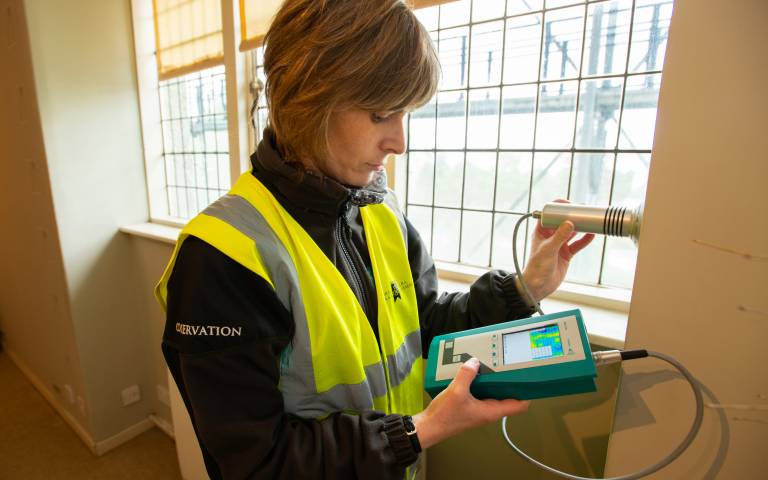New technical guidance to help protect historic buildings from climate change published
22 March 2021
New technical guidance written by Dr Scott Allan Orr on moisture measurement in the historic environment has been published by Historic Environment Scotland.

New technical guidance into the different methods of measuring moisture in historic buildings which could help protect them from the impacts of climate change has been published by Historic Environment Scotland (HES) today (Monday 22 March).
This guidance was commissioned by HES as an output from a project undertaken at UCL and Oxford University within the SEAHA Centre for Doctoral Training by Dr Scott Allan Orr, and forms part of a new Memorandum of Understanding (MoU) between HES and University College London (UCL) Institute for Sustainable Heritage.
With climate change causing increasing levels of rainfall and historic buildings particularly susceptible to the accelerated decay this can cause, it is hoped the new guidance will help to target maintenance, conservation and adaptation work in historic buildings, contributing to the reuse, repair and retrofit of existing buildings which will be crucial for national carbon reduction efforts.
Some of the techniques outlined in the paper, such as the use of microwave moisture monitors, have been applied in high-profile conservation efforts involving HES at Hill House in Helensburgh, the Mackintosh designed masterpiece managed by The National Trust for Scotland.
This new technical guide is part of a collaborative approach between HES and the UCL Institute for Sustainable Heritage to work together to expand research into heritage science, technology and data science applications for the historic environment, with a particular emphasis on climate change – one of the fastest growing threats for the historic environment worldwide.
The MoU will also see the two organisations collaborate on training and skills development, as well as work to engage communities more widely in research and heritage science – building on the success of projects such as Monument Monitor, which has explored how crowdsourced photographs can be used to help monitor and conserve historic sites.
David Mitchell, Director of Conservation at HES, said: “I’m very pleased to welcome this newly published research in collaboration with the Institute for Sustainable Heritage at UCL, which will provide a valuable resource for those involved in the management and care of historic buildings.
“At HES, we know that to care for our past we must look to the future, and we will continue to work closely with our partners at the UCL Institute for Sustainable Heritage to champion the role of cutting-edge technology, science and digital innovation in protecting and promoting our heritage.”
Josep, Grau-Bove, Lecturer in Science and Engineering in Arts Heritage and Archaeology at UCL Institute for Sustainable Heritage, said: "The collaboration with ISH and HES has a great momentum. Together we have pioneered citizen heritage science and innovative research-led teaching in the MSc Data Science for Cultural Heritage. This MoU marks a new chapter in our collaboration. We are already preparing new research projects uniting our expertise in digital technologies, crowd sourcing, citizen science and environmental research."
To view Technical Paper 35: Moisture Measurement in the Historic Environment, visit the HES website.
Media enquiries
All press and media enquiries please contact:
Claire Mullaney
Senior Communications Officer
Historic Environment Scotland
07721 959 962
mediaoffice@hes.scot
Image: Historic Environment Scotland (HES) Conservation Science Team surveying The Hill House in Helensburgh using microwave moisture sensors. Copyright Historic Environment Scotland.
 Close
Close

